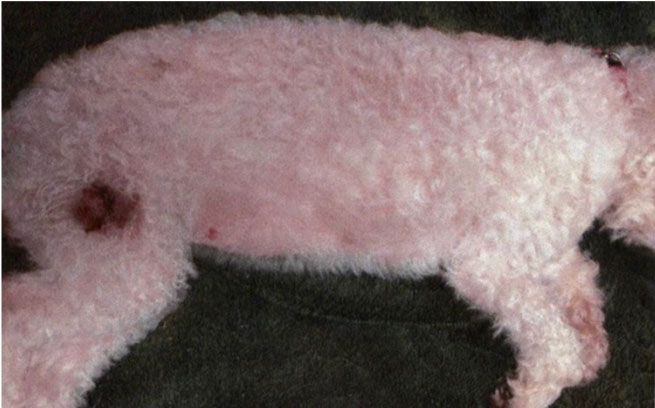
Skin Reaction To Rabies Vaccine In Dogs. Although rare several forms of adverse reactions have been documented after vaccination in dogs and cats. The most common vaccine reactions in dogs are lethargy and soreness which may or may not be combined with a mild fever. Skin lesions were hyperpigmented alopecic macules 2 to 5 cm in. This occurs because the dogs immune system reacts both locally and systemically to vaccine administration.

An allergic reaction is an aberrant response to the vaccination or rather an over-reaction to the vaccine. This includes problems like itching redness allergies eczema yeast infections autoimmune diseases and so on. A little known and often misdiagnosed reaction to the rabies vaccine in dogs this problem may develop near or over the vaccine administration site and around the vaccine material that was injected or as a more widespread reaction. This typically isnt because theres something wrong with the vaccine itself but is due to an overreaction of the dogs immune system. Fortunately the vast majority of vaccine reactions in the dog are similar to this case where the targeted tissue is the skin. An injection site reaction secondary to post-rabies vaccination is a relatively common canine skin disease often characterized by a focal area of hair loss thickened skin.
It appears to occur in Weimaraners as a vaccine reaction and this may also affect Mastiffs and Great Danes.
Vaccines that seem to be most likely to cause reactions include the killed rabies canine corona FeLV and Leptospira vaccine. Rabies miasm symptoms are very common in dogs. Microneedle patches were well tolerated in the skin with mild erythema minimal wheal formation and complete resolution of skin reactions within 7days and generated no systemic adverse events. An allergic reaction is an aberrant response to the vaccination or rather an over-reaction to the vaccine. Prompting the immune system to respond is the whole point of vaccination. Skin lesions were hyperpigmented alopecic macules 2 to 5 cm in.